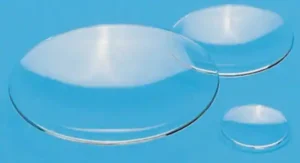If you have keratoconus, you may be wondering if you can still wear glasses. The short answer is yes, but it may take some trial and error to find the right pair. Here are a few tips to help you out.
What is keratoconus?
Keratoconus is a degenerative eye condition in which the normally round, dome-shaped cornea begins to thin and change shape into a cone. This can cause blurred or distorted vision and, in some cases, severe vision impairment. Keratoconus typically affects both eyes, but seldom leads to complete blindness.
Glasses or soft contact lenses may help correct some of the milder vision problems associated with keratoconus, but as the condition progresses, these methods may become less effective. In severe cases, a corneal transplant may be necessary to improve vision.
What are the symptoms of keratoconus?
Symptoms of keratoconus typically first appear in the late teens or early twenties. In the early stages of the disease, keratoconus sufferers may experience slight blurring and distortion of their vision and a gradual worsening of their nearsightedness or farsightedness. As the disease progresses, the symptoms may become more severe, causing blurred vision, double vision, halos around lights, and extreme sensitivity to light. In advanced cases of keratoconus, a cornea transplant may be necessary to restore vision.
What causes keratoconus?
There is no one definitive answer to this question – keratoconus may be caused by a combination of hereditary and environmental factors. However, it is thought that DNA plays a role in the development of the condition, as keratoconus often runs in families. Additionally, certain medical conditions (such as hay fever and asthma) and chronic eye rubbing have been linked to an increased risk of developing keratoconus.
How is keratoconus diagnosed?
Keratoconus is usually diagnosed during a routine eye exam. Your doctor will ask about any symptoms you’re experiencing and perform a comprehensive eye exam. This will likely include: -Visual acuity test. This measures how clearly you see. -Corneal topography. This uses a computerized instrument to map the curvature of your cornea. -Eye pressure measurement. This uses a device called a tonometer to gently touch the surface of your eye and measure the pressure inside your eye. -Pupil dilation and thorough examination of the retina. Your doctor will insert drops in your eyes to dilate (enlarge) your pupils and examine your retina for signs of damage.
How is keratoconus treated?
Keratoconus is a progressive eye condition in which the normally round cornea (the clear front window of the eye) becomes thin and cone-shaped. This abnormal shape prevents light from being properly focused on the retina (the back of the eye), resulting in poor vision.
There is no cure for keratoconus, but there are several treatment options available to help slow the progression of the disease and improve vision. These include:
-Corneal collagen cross-linking (CXL). This is a relatively new procedure that involves strengthening the weakened collagen fibers in the cornea using ultraviolet light and riboflavin (vitamin B2) drops.
-Intacs. This FDA-approved treatment involves insertion of tiny plastic inserts into the cornea to reshape it.
-Corneal implants. Also known as Keraring or Intacs, these are small, curved devices that are placed in the cornea to flatten it and improve vision.
keratoconus can also be treated with glasses or contact lenses, but these may not be effective in all cases. In severe cases, a corneal transplant may be necessary to improve vision.
Can keratoconus be prevented?
Unfortunately, there is no known way to prevent keratoconus. The condition may be genetic, so it may not be possible to prevent it even if the risk factors are known. However, Keratoconus can be effectively managed with a variety of treatment options, so it is important to see an eye doctor if you think you may be at risk.
Living with keratoconus
There is no one answer to this question, as every individual experiences keratoconus differently. Some people with the condition are able to wear glasses or contact lenses, while others require corneal transplant surgery to improve their vision.
If you have keratoconus, it is important to see an eye doctor regularly so that your condition can be monitored and treated accordingly. Treatment options for keratoconus include eyeglasses, contact lenses, corneal collagen cross-linking (CXL), and corneal transplant surgery. Your doctor will work with you to determine the best treatment option for your individual needs.
FAQs about keratoconus
Q: What is keratoconus?
A: Keratoconus is an eye condition that causes the cornea to thin and change shape. This can cause problems with vision.
Q: Who is at risk for keratoconus?
A: Keratoconus can happen to anyone, but it is more common in people who have family members with the condition. It usually starts in the teen years or early adulthood.
Q: What are the symptoms of keratoconus?
A: Symptoms of keratoconus can include blurred vision, increased sensitivity to light, and difficulty seeing at night. Some people also have astigmatism or nearsightedness.
Q: How is keratoconus diagnosed?
A: Your doctor can diagnose keratoconus with a comprehensive eye exam. They will look for signs of corneal thinning and changes in shape. They may also use special instruments to map the curve of your cornea.
Q: How is keratoconus treated?
A: There is no cure for keratoconus, but there are treatments that can help improve vision. These include eyeglasses, contact lenses, and surgery.












